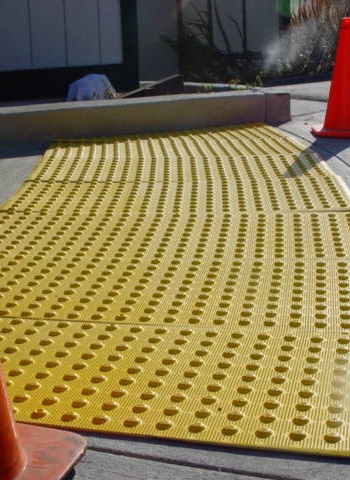|
Cost and maintenance issues can arise, almost unknowingly, if no particular detectable warning system is specified. In this case, the job contractor is likely to employ the least expensive system. This may include stamping the concrete, or the use of pavers, and in either case, will not stand up to certain, harsher outdoor environments. This has proven to be the case in numerous instances over the past five years of experimentation and limited implementation. When stamping is used, it is rarely compliant right from the get-go as it is too difficult to create the exact dimensions of the domes as specified. Stamping and pavers can exhibit breakage of domes and fading of the material in a short period of time. Aside from all that, they’re also not nearly as aesthetically pleasing as high-end ADA ramps. Architects and structural design companies are now behind ADA ramps 100% because, after being tested in the field, have proven to be much more durable in material and appearance than their flawed predecessors. |
 ADA Ramps Architect |